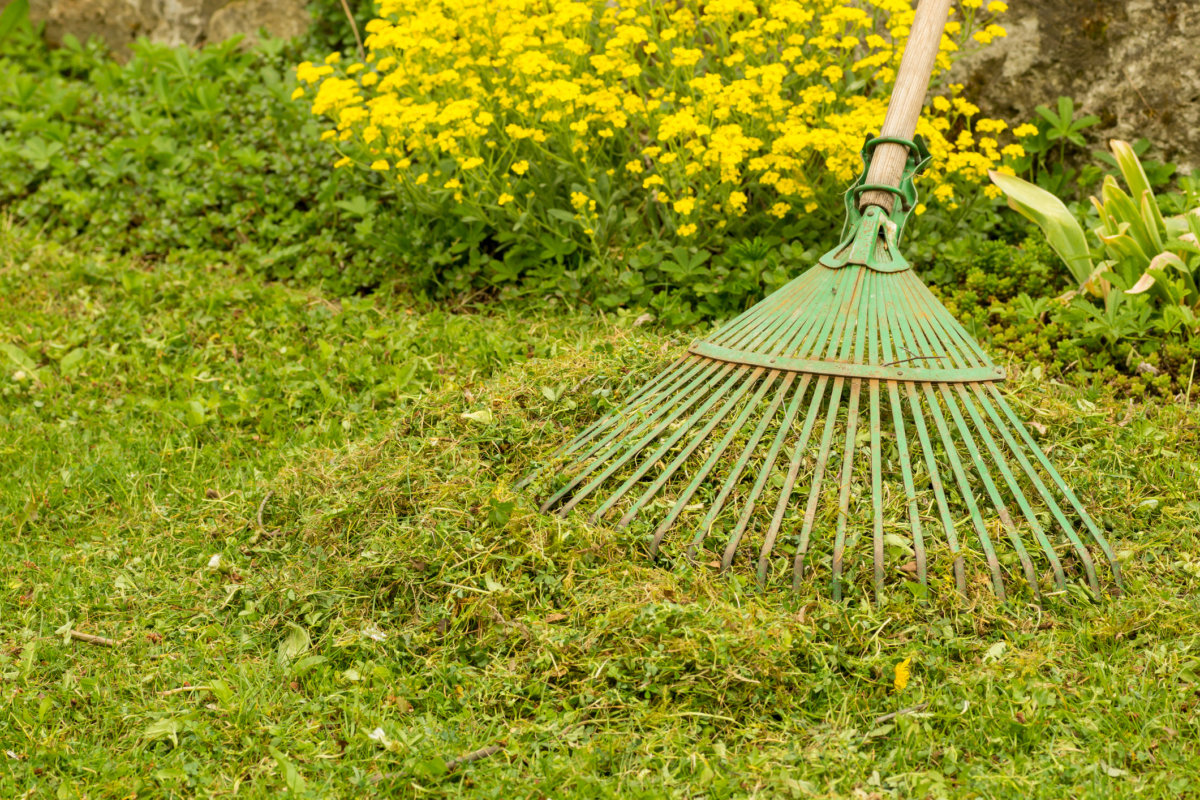How does your lawn look? Has moss invaded your lawn during this wet winter?
If your lawn is healthy and in a location that favors grass, it can outcompete moss. Still, our cool, damp climate in western Washington provides an ideal environment for moss to thrive. You will find it very difficult to banish moss entirely.
Natural lawn care will help
In Harmony’s natural lawn care services will greatly improve the health of your lawn. But if your lawn has underlying problems or it is in the wrong location, moss will grow better than grass will. You need to address the root causes.
Lawn conditions that favor moss
Infertility: macronutrients and trace minerals
Your lawn needs nutrients to grow more thickly so it can compete with moss and weeds. We fertilize our clients’ lawns several times each year with organic fertilizers and other products that build soil and plant health.
This time of year, we offer AZOMITE® to our lawn care clients. Most fertilizers provide only macronutrients, primarily nitrogen (N), phosphorus (P) and potassium (K), which are called macronutrients. Plants require macronutrients in large amounts.
In addition to N-P-K, plants require trace minerals to produce at full potential. AZOMITE provides these trace minerals. AZOMITE is a natural substance which is mined directly from its Utah desert source. OMRI-Listed for organic production, AZOMITE is used in agriculture and as a soil amendment. It is safe to use and good for the environment.
AZOMITE supplies secondary elements (Ca and Mg) and potassium (K). AZOMITE has been shown to improve root systems, yields and general plant vigor when used for field crops, orchards, lawns and gardens.
Acidity/calcium deficit
Many soils in western Washington are acidic and/or low in calcium. Lawns don’t grow well in these conditions.
We have been applying lime to our clients’ lawns this winter when needed. Lime will help your lawn grow more thickly. We use Dolopril lime, which contains both calcium and magnesium.
Dampness
If you have a problem with drainage, you will also have problems with moss. Is a down spout draining onto your lawn? Is the lawn lower than your driveway or sidewalk? Do you have low spots in the lawn that tend to be wet? And do you overwater your lawn? Lawns do better with deep, infrequent watering.
We can help you correct drainage problems. If needed, we could fix drainage onto the lawn from the driveway or sidewalk. We could also alter the slope or fill in low spots that tend to stay wet.
Compaction
If your soil is compacted, it’s tough for grass to grow. Aeration will help your lawn roots get the air and water they need. It improves the uptake of water and fertilizer. And it reduces water runoff and puddles. Overseeding fills in any thin spots to help your lawn compete with moss.
We generally offer aeration and overseeding in spring. We recommend aeration and overseeding once a year.
Heavy shade
Grass needs regular sunlight to grow well. It doesn’t tolerate heavy shade.
If a tree is shading part of your lawn, we could prune it to thin out branches and allow more sunlight and air circulation. Another option is to replace the lawn in the shade with shade-tolerant groundcovers or other plants. Our designers can help.
Moss control: short-term fix
If you would like, we can apply a moss control treatment to your lawn. Iron is used to burn the moss, turning it black. Iron will dehydrate moss but will not kill it.
You will need to remove the moss with a thatching rake once it turns black. If it’s not raked out, it will come back more strongly. And if you don’t correct the conditions that favor moss, it will be a recurring problem.
Shade gardens: long-term fix
As we said above, lawns are not shade plants. They grow best when they have regular sunlight.
We don’t recommend removing trees for the sake of the lawn. We love trees, and as the earth warms up, we need more trees to cool our cities. Instead, we suggest working with one of our designers to create a shade garden where the lawn doesn’t grow well.
There are many beautiful plants that grow well in the shade and provide color, structure, texture and even fragrance. Great Plant Picks lists more than a thousand plants that will thrive in the shade in our climate.
You can narrow down the Great Plant Picks list by searching for bulbs, grasses, conifers, perennials, shrubs and trees. Or you can search for dappled or deep shade, and whether plants need regular water or are drought-tolerant.
With all of those choices, why attempt to grow a lawn in the shade?
Your shady area could become a backyard wildlife sanctuary. Many native plants grow well in the shade. They attract native birds and wildlife. You could keep the area a bit wilder, with less pruning and more vegetation. Providing shelter encourages birds, bees and other wildlife to spend time in your yard.
You may want to consider adding a refuge for yourself in the shady area. In addition to plantings, you could add a small patio and a chair or two. Imagine sitting in the cool shade on a hot summer day with a book and a cool drink.
Contact us
We will take a holistic look at what your lawn needs. We could improve your lawn’s health, prune trees, improve drainage, or design and install a shade garden. Contact us to talk about your lawn and how we can help.


Where can I buy Azomite?
Walt’s Organic Fertilizer in Seattle sells azomite and other organic fertilizer products. You can buy at their store or on their website.